In May 1996, an unforgiving storm turned Mount Everest into a graveyard. Among the climbers caught in the chaos was Beck Weathers—a Dallas pathologist chasing redemption on the world’s tallest peak. What followed was one of the most astonishing survival stories in mountaineering history.
Texas Roots

Beck Weathers was born in 1946 in Dallas, Texas. He grew up in a traditional Southern household where expectations ran high and emotions stayed buried.
He was curious, sharp, and stubborn from a young age. Books, science, and quiet ambition shaped him more than games or friends ever did.
The Texas sun and flat landscapes couldn’t contain his imagination. Even early on, Beck was wired to chase something higher, something beyond.
A Life in Medicine

Beck began college in the mid-1960s, attending Southern Methodist University. He later earned his medical degree from Texas Tech, driven by discipline and quiet ambition.
He specialized in pathology, studying disease through tissue. It suited him—precise, controlled, methodical. By the 1990s, he led staff at Medical City Dallas.
His career looked polished and predictable. But under the white coat and steady hands, a restless storm was quietly building strength.
Family and Fracture
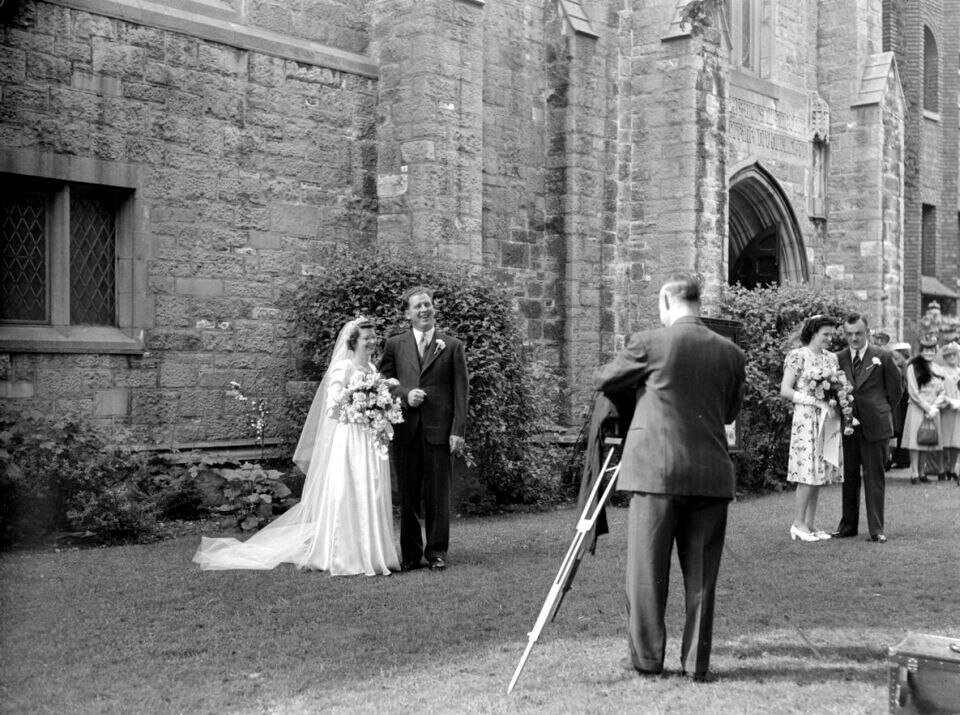
Beck married Peach in 1974. She was steady, kind, and grounded—a perfect counterbalance to his quiet intensity and growing hunger for something more.
They built a life in Dallas, raising two children in a comfortable home. To outsiders, things looked solid. But cracks were forming inside.
As Beck’s inner storms grew, mountains became his outlet. The higher he climbed, the further he drifted from Peach, who struggled to hold them together.
Chasing Peaks, Losing Ground

Beck was hooked on mountains—so much that he ditched his 20th anniversary to scale Everest, barely noticing his marriage slipping into freefall.
Climbing wasn’t just a hobby. It was his escape, his pride, his way of proving he could conquer anything—even if it cost him everything.
Peach Weathers watched the man she loved disappear behind peaks and summits, wondering how long he’d keep choosing mountains over family.
Escape Into Ice
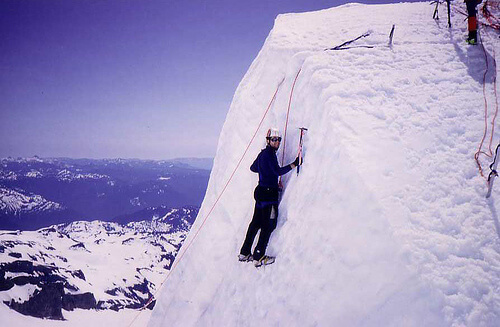
According to Beck, he didn’t find climbing —it found him. A deep depression cracked him open, and the mountains filled that void like cold, sharp therapy.
He wasn’t after views; he wanted distraction, control, a way to feel powerful. Everest wasn’t the first mountain. It was just the tallest.
Climbing numbed his pain. But it also numbed his connection to Peach, who warned: obsession doesn’t just climb over fear—it bulldozes love.
The Allure of the Peak

Mount Everest towers along the Nepal–Tibet border, reaching 29,035 feet. Its icy ridges, shifting storms, and deadly cold create a world few survive.
Climbers face glacier cracks, thin air, and brutal wind. The “Death Zone” slowly shuts down the body, even while resting. Survival is never guaranteed.
Yet people come anyway. Because Everest isn’t just a mountain—it’s the ultimate test of strength, endurance, and the fragile boundary between ambition and annihilation.
Everest Doesn’t Forget: The Death Zone
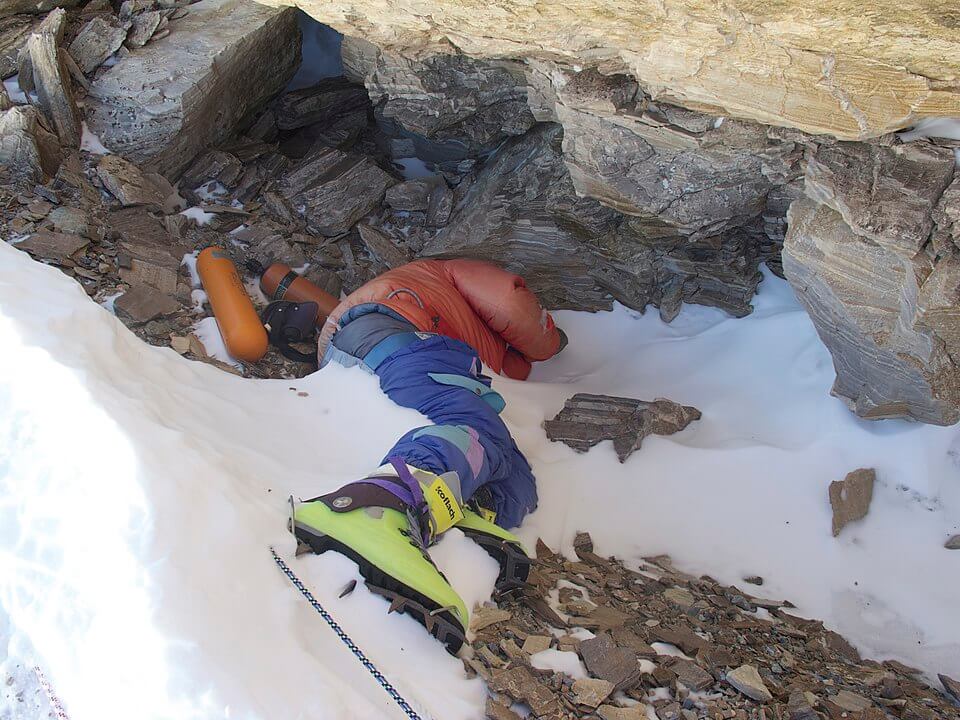
Climbing Everest isn’t just hard—it’s lethal. The altitude weakens muscles, clouds thinking, and kills cells. Even with oxygen, your body slowly shuts down.
Weather can shift in minutes. Frostbite, falls, and avalanches are common. Rescue is nearly impossible above 8,000 meters—the infamous “Death Zone.”
More than 300 climbers have died on Everest. Many still lie where they fell—silent warnings frozen in place, untouched, unburied, and part of the mountain forever.
The Myth of Everest
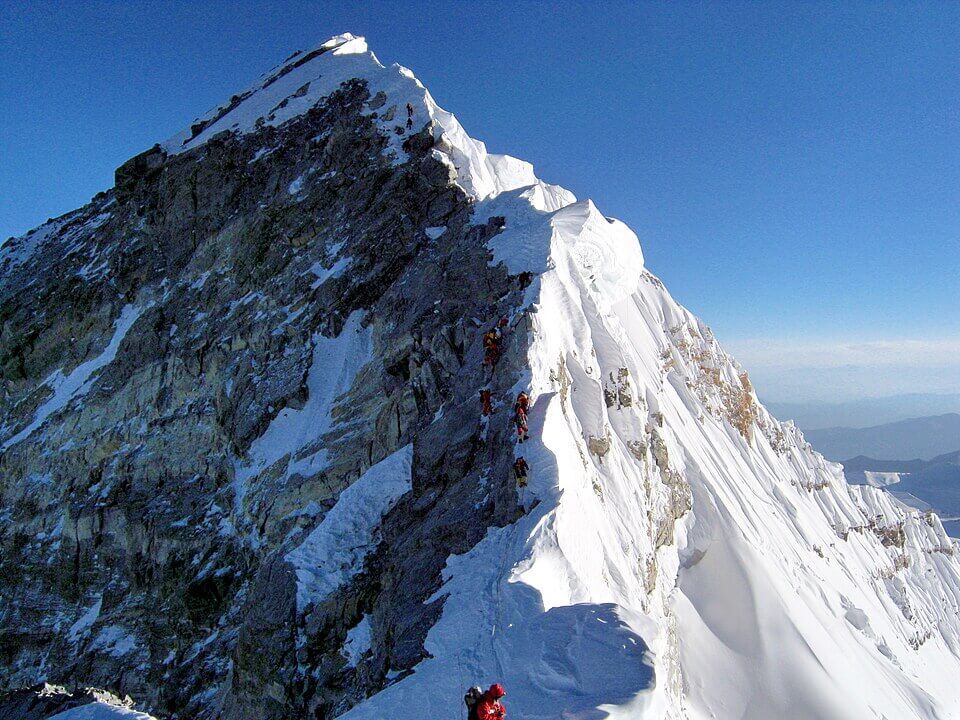
Everest represents more than altitude. It’s mythology—a summit where ambition meets fear. To climb it is to prove something to yourself and the world.
Beck Weathers wasn’t after scenery. He wanted validation. Everest promised glory, escape, and meaning—the illusion of control over life’s messier truths.
But the mountain doesn’t give answers. It strips you down. That’s why Beck couldn’t walk away. He needed Everest to define him.
One More Mountain
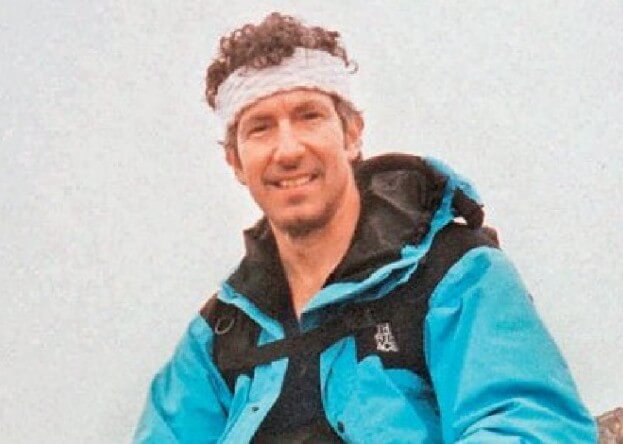
Beck had already conquered eight big peaks before Everest. This one, though, felt like his final test—of strength, endurance, and self-worth.
He trained like mad, convinced this climb would define him. His body was ready. His mind was somewhere else entirely.
He ignored the odds, the deaths, the warnings. Only half of Everest expeditions succeed—but Beck was betting on more than just altitude.
Team Hall
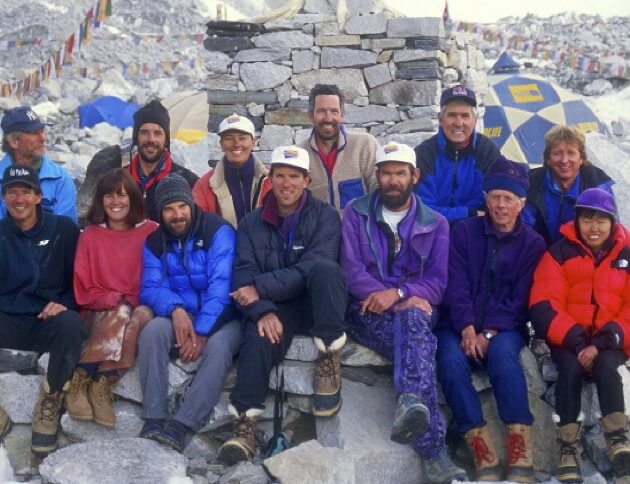
Beck was part of Rob Hall’s expedition, a guided climb operated by Hall’s New Zealand-based company, Adventure Consultants. The group included experienced and rookie climbers.
Rob Hall led the team. Others included Doug Hansen, Yasuko Namba, Mike Groom, and Jon Krakauer, who was reporting for Outside magazine.
Hall was respected, steady under pressure. But Everest doesn’t care about résumés. That year, even the best found themselves in a fight for survival.
May 9: The Final Push
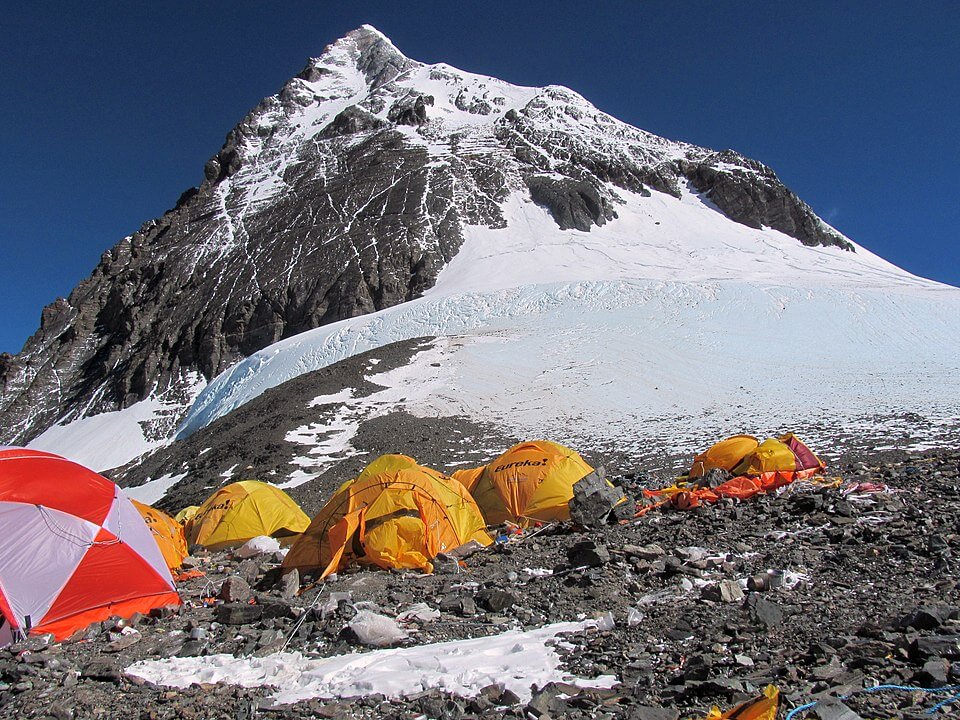
The team reached High Camp as planned. Winds were calm. Spirits were high. Everest loomed silently, yet deadly, as four groups settled on the South Col.
“High Camp,” also known as the South Col, is a high-altitude campsite situated at roughly 26,000 feet on a saddle along the mountain’s southeast ridge.
Beck’s team would launch their summit bid at midnight, with noon set as the final cutoff to reach the top.
A Blurry Truth

Sadly (or luckily?) for him, Beck’s eyes betrayed him. A previous eye surgery, meant to help him see better, failed under Everest’s pressure, blurring his vision into a mess.
Altitude warped his corneas. A scratch from an icy glove blinded his right eye completely. The left wasn’t much better.
He stood helpless, watching his team climb past. He fell from the front of the line to dead last in minutes.
Stuck at the Balcony
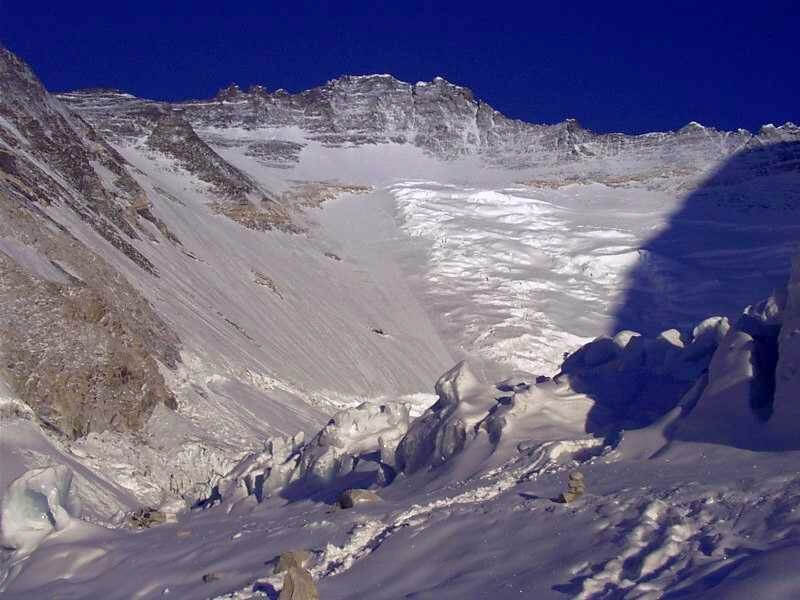
He reached the Balcony, still hoping his vision would clear. One good eye wasn’t enough to climb, not at this altitude, not in this cold.
Beck made the call to wait. Rob Hall gave him 30 minutes to recover, then promised to return after summiting.
The wait turned into a gamble. Beck stayed behind, trusting Hall to come back. At the time, Beck didn’t know Hall was already doomed.
The Ones Who Didn’t Return
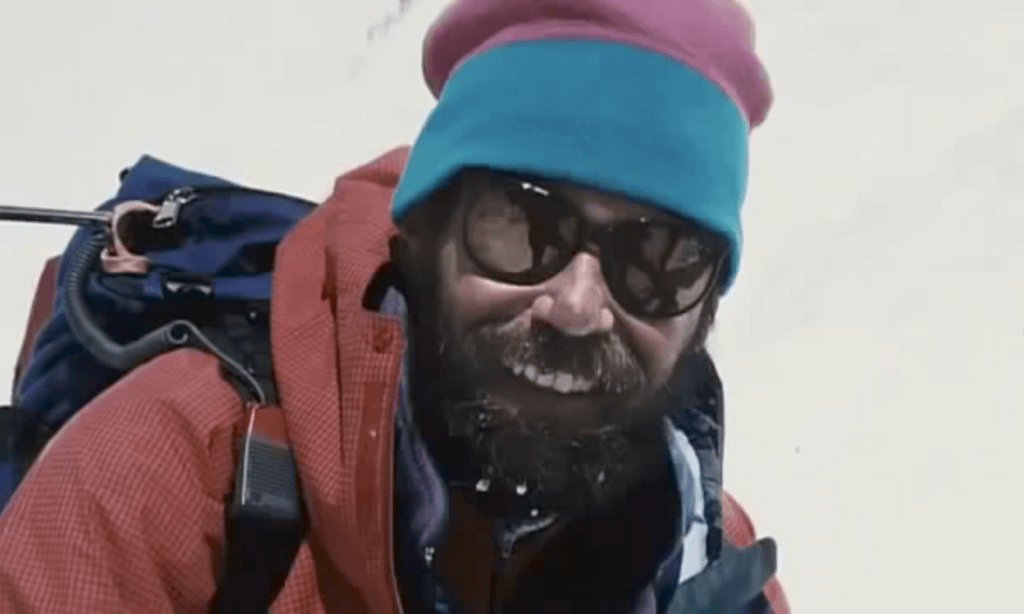
Rob Hall and Doug Hansen reached Everest’s summit just as the blizzard began. Winds rose fast. The sky turned white. They were the first hit.
Visibility vanished. Doug struggled to descend. Rob refused to leave him, even as radio calls warned of worsening conditions. The storm swallowed them whole.
Others were still climbing up when the blizzard hit them, too, unaware that tragedy had already begun. By May 11, eight climbers from three different expeditions would have perished.
Waiting Turns Deadly
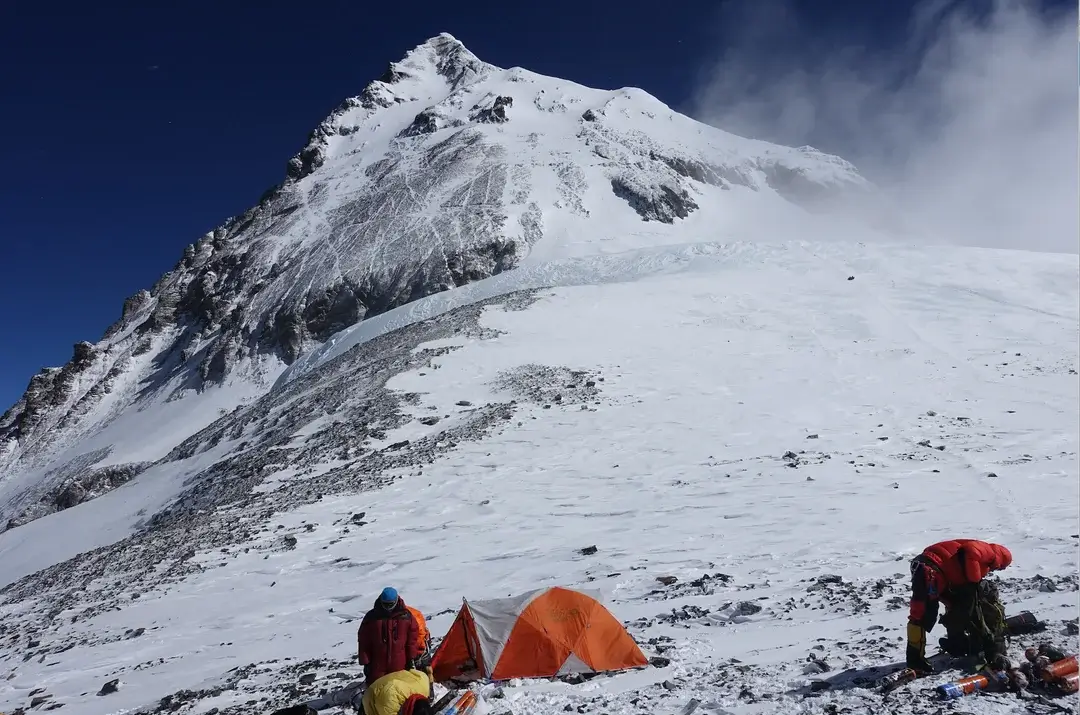
While he waited for the rest of the team, unaware of what was going on, three climbers passed and invited Beck to descend. He refused. He didn’t want to disappear if Hall returned. So he waited.
The light dimmed. The wind picked up. Snow began to swirl. Beck realized too late that he’d stayed too long at the party.
Cold seeped in. His mind went foggy. He started seeing things. But the storm was no hallucination. It was real, and coming fast.
Blizzard Hits
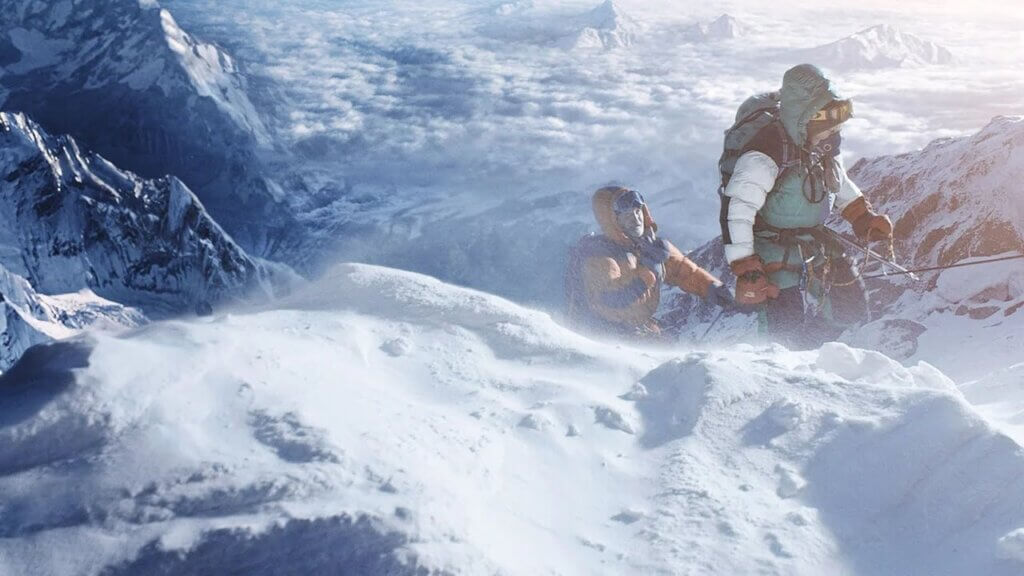
The storm exploded over Everest like a beast. Wind screamed. Visibility dropped to zero. Climbers scattered. Some moved, others froze. Everyone panicked.
Beck wasn’t alone anymore. Yasuko Namba staggered in, half-dead. Mike Groom joined, then a few others from different teams. Chaos met desperation.
Mike roped Beck and tried to descend, but every step was agony. They were barely a quarter-mile from safety—but that’s Everest.
Whiteout Terror
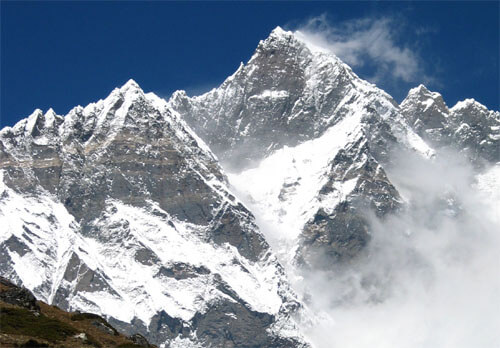
They moved together, slow and blind. The storm didn’t just freeze flesh—it erased direction. They couldn’t tell up from down. Camp felt a lifetime away.
Suddenly Neal Beidleman yelled: stop. They were feet from the Kangshung Face—a seven-thousand-foot drop. One more step and they’d vanish.
They huddled. Waiting. Hoping. Wondering who’d make it till morning. Everyone knew it—some would survive, others wouldn’t. Nobody said it aloud.
The Splinter Plan
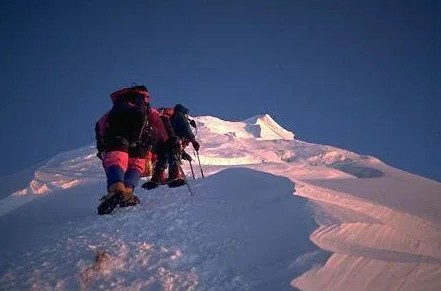
The team new they were in trouble and took action. A few strong climbers decided to try reaching camp. If they made it, they’d return with help. If they didn’t—well, no one would.
Beidleman, Groom, and Schoening crawled away into the white. Beck stayed behind, motionless in the storm, frozen beside Yasuko.
Nobody knew if the rescuers would make it. Nobody knew if anyone left behind would be alive when they got back.
Enter Anatoli
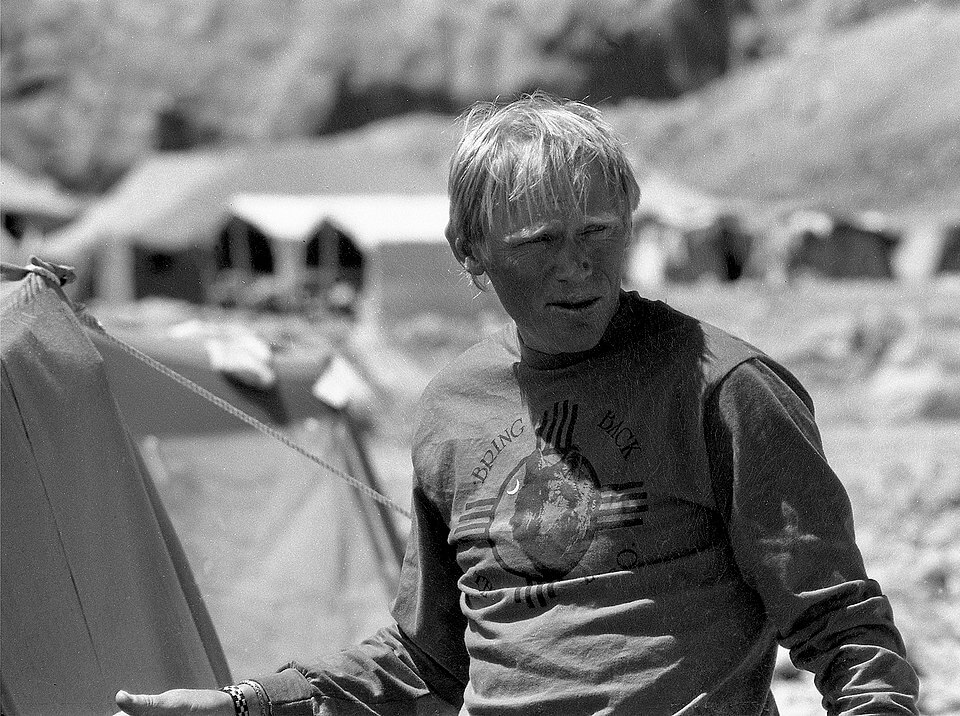
Anatoli Boukreev, a guide from a different expedition, didn’t wait when the blizzard struck. He went out into the storm alone, three times. He moved like a ghost.
He rescued Pittman, Fox, and Madsen. But he couldn’t carry everyone. Yasuko and Beck were too far gone. He left them behind.
The storm decided who stayed and who went. Boukreev fought it. But even he couldn’t beat it completely.
Snow Grave

By dawn, the wind eased. Sherpas returned to find Beck and Yasuko, buried in snow, unmoving, faces crusted in ice.
They peeled back Yasuko’s frozen mask. Her skin was porcelain. Her pupils were wide. She was breathing, but barely; there was nothing else to do. She would die soon after.
They checked Beck. Same story. Barely alive. Logic said leave them. Emotion didn’t matter. Everest didn’t care about either.
The Death Call
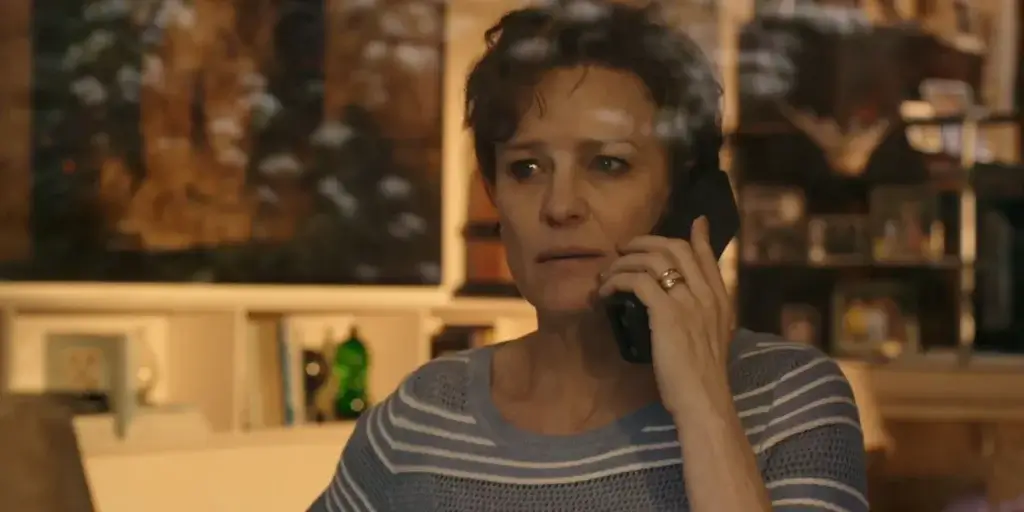
They returned to camp and made the call: they’re gone. Base Camp told Rob Hall’s office. The office decided to call Dallas to break the news to Beck’s family.
At the time of the call, the family already knew he was missing. Peach picked up the phone and heard the words no one wants to hear: Beck didn’t make it down.
She froze. Couldn’t cry. Couldn’t breathe. Couldn’t tell the kids. Instead, she called her brother and friends, trying to brace for the worst.
Back From Nowhere
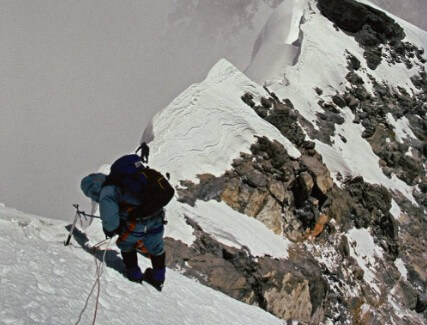
Up on the mountain, a miracle took place: Beck stood up. Literally. Out of the snow. Out of the dead. He was hallucinating and believed he was in Texas.
Then it clicked—his family. He saw them clearly. That vision yanked him up and pushed him forward, step by step, toward camp.
He stumbled into camp like a ghost. Radio: “You won’t believe what walked in.” Response: “It changes nothing. He’ll still die.”
“That Dead Guy”
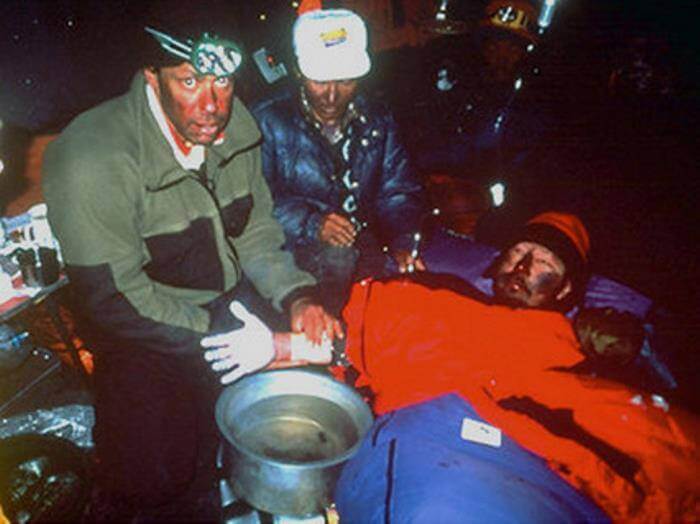
They left Beck in Fischer’s tent, thinking he was finished. He overheard climbers mention “the dead guy.” He wondered who they meant. Oh—him.
Camp packed up around him. Most climbers moved out. Only a few remained. Beck drifted between sleep and silence.
Jon Krakauer found him alive. Jaw dropped. Beck wasn’t dead. He was just impossible. And Everest doesn’t like impossible things.
News Rewinds

The new report came: Beck was alive—but barely. The call to Peach offered no hope, just medical facts and technical warnings.
But Peach didn’t hear science. She heard life. She locked in, determined to act. She didn’t care about odds.
No one mentioned helicopters yet. She didn’t need suggestions. She needed action. She started dialing. She was gonna save Beck no matter what.
Peach Mobilizes

Peach called everyone—friends, senators, diplomats, anyone who’d listen. The “Dallas Power Moms” went full throttle. Everest had met its match.
They reached the State Department. They reached Nepal. The final push landed on Inu K.C.—a determined woman from a warrior caste.
Inu didn’t hesitate. “I know a man,” she said. “He just hasn’t been tested yet. Let me ask him.”
Madan K.C. Answers
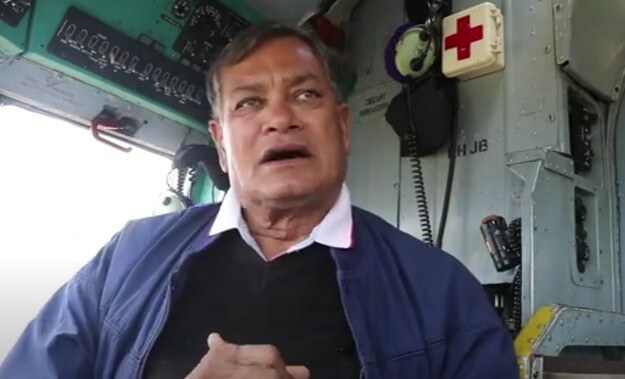
They found Lt. Col. Madan K.C. on a golf course, mid-swing. He didn’t blink. “I will rescue Beck,” he said. No hesitation whatsoever.
Everyone else said no—too risky, too high, too crazy. But Madan said yes, like it was brunch plans. That’s all Peach needed to hear, really.
He loaded the helicopter with zero ceremony. Altitude? Whatever. Weather? Bring it on. Logic? Overrated. Madan had a mission, and nothing was going to stop him.
The Impossible Flight
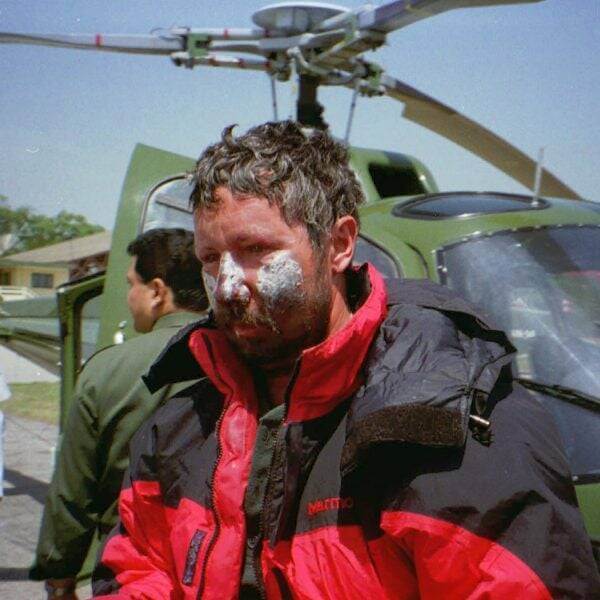
The EuroCopter Squirrel had no business surviving that flight. Thin air, brutal winds, moody pressure—it should’ve spiraled down dramatically, like a bad soap opera exit.
But nope. It rose like a caffeinated phoenix, hovered with flair, then casually landed. Beck got scooped up, and just like that, they were airborne again—no big deal.
It ranked among the riskiest mountain rescues in history. Everest huffed, puffed, and still lost this round. Beck was finally safe.
Dallas, Re-Entry

Beck came home to Dallas, looking like a stranger. He was missing parts, barely functional, but breathing. Peach only cared about one thing: he lived.
She didn’t flinch. He confessed everything: his obsession, his failure, his guilt. She gave him one year.
If he changed, they’d see. If not, she was gone. Simple deal. Beck took it.
Not the Hands
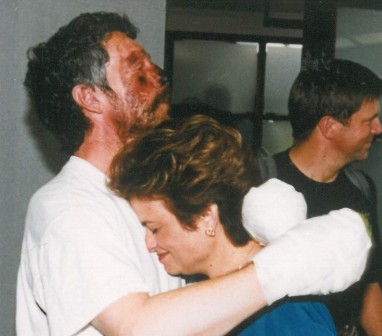
Nobody knew how bad it really was. His hands didn’t swell, didn’t blister. Just turned cold and gray like abandoned meat.
Doctors ran scans. No blood flow. Right hand: dead. Left hand: nearly dead. The news was brutal.
Beck still felt them, could move them—but they weren’t alive. He was controlling puppets made of flesh.
Pieces Falling Off
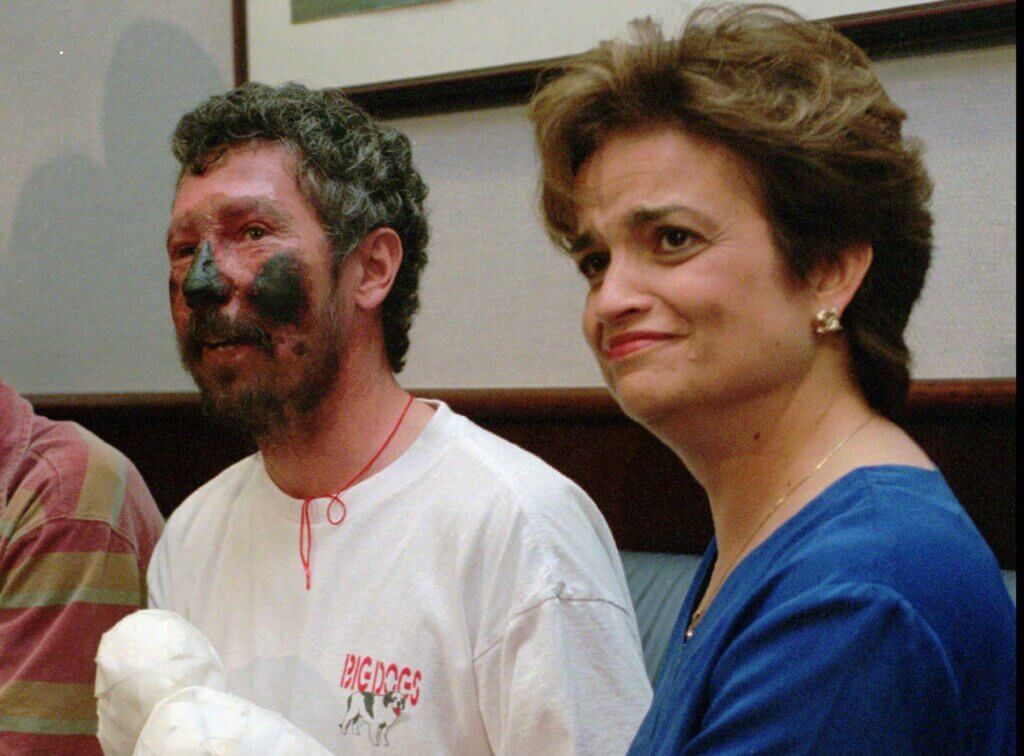
Beck met the hand surgeon, Mike Doyle. Flexing his fingers didn’t matter—inside, the damage was irreversible. He was losing more than hands.
Things started dropping: an eyebrow, a toe. His body had reached its limits. Everest had taken souvenirs.
He didn’t whine. He didn’t wallow. He focused on fixing what could be fixed—and letting go of what couldn’t.
Enter Dr. Nose
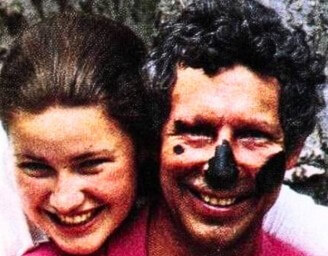
Then came the nose. Frozen through cartilage and bone, it couldn’t be saved. But a mold was made—using a gum wrapper, no less.
They built a new nose from forehead skin, neck flesh, and ear cartilage. Upside-down. Growing above his eyes.
He forbade photos. “National Enquirer bait,” he joked. But the new nose? Pretty solid—except when his forehead itched in the shower.
Peach’s Perspective

Peach saw things differently now. The old Beck was gone. She wasn’t mourning him. She was meeting someone new—someone changed by something bigger than ego.
Their relationship wasn’t fragile anymore. Anger faded. Sadness took its place, mourning the years that obsession had burned away.
But she still stood by him. Not out of pity. Out of something deeper than before.
Redefining Faith
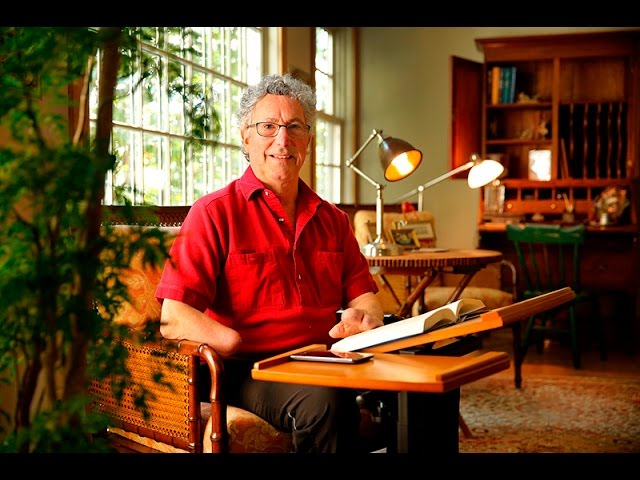
People asked: Did Everest make him spiritual? Did he pray? The answer wasn’t simple. Beck had drifted from faith long before mountains entered the picture.
He wasn’t struck by lightning or born again. But Everest made him pause. Made him rethink purpose, mortality, miracles.
His family became his anchor. Not ambition. Not adventure. Not applause. Just those who waited for him to come home.
The Media Storm
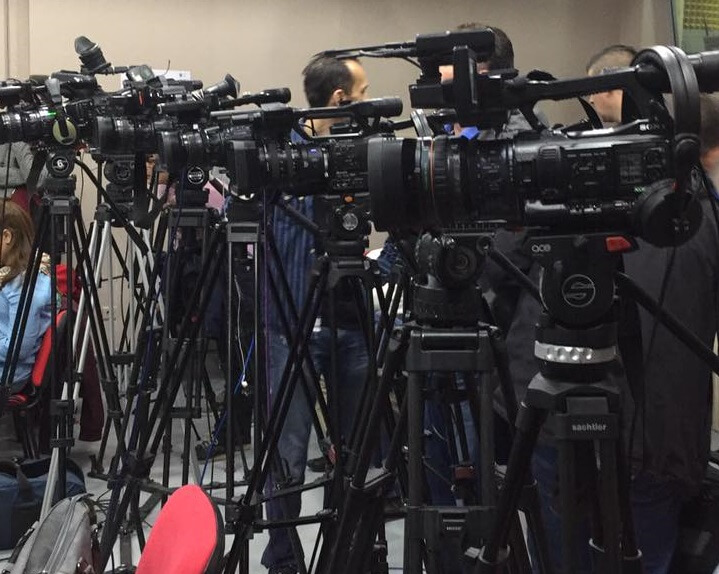
The 1996 Everest disaster was front-page news. The storm had claimed lives and sparked debate. Survivors like Beck became part of a global spotlight.
Cameras, interviews, and documentaries followed. He was a curiosity—a man who walked out of death, frostbitten but somehow smiling.
Beck wasn’t chasing fame. But the world was fascinated. How does someone survive what should have killed them twice over?
Into Thin Air

In 1997, Jon Krakauer, another survivor, released Into Thin Air, a bestselling account of the disaster. Beck featured prominently—frozen, forgotten, and then miraculously revived.
The book captured public imagination. Krakauer’s storytelling was vivid, gripping, and controversial. Beck’s brush with death was a haunting centerpiece.
It put the 1996 climb into history books—and Beck into the minds of readers everywhere.
Made for the Screen
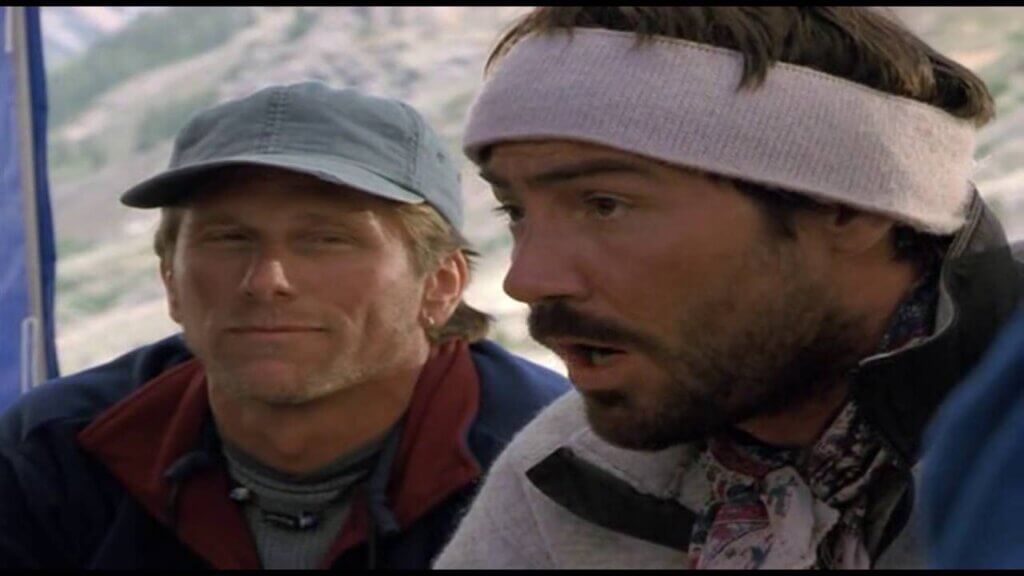
That same year, Into Thin Air: Death on Everest aired on TV. Beck was portrayed as the man left behind, only to rise again.
The dramatization stirred debate, but audiences were captivated. Everest’s beauty and brutality were undeniable, and Beck’s survival seemed almost unreal.
The story was no longer just a mountaineering tale—it had become cultural legend.
Everest on Film

In 1998, Everest, an IMAX documentary, brought the mountain’s power to the big screen. Beck’s ordeal lingered in the background, impossible to forget.
Then in 2015, Everest hit theaters. A major motion picture with big stars. Beck was played by Josh Brolin.
Viewers watched his fingers blacken and fall, his resolve flicker and hold. It was cinematic, harrowing, and deeply human.
Beck’s Own Words
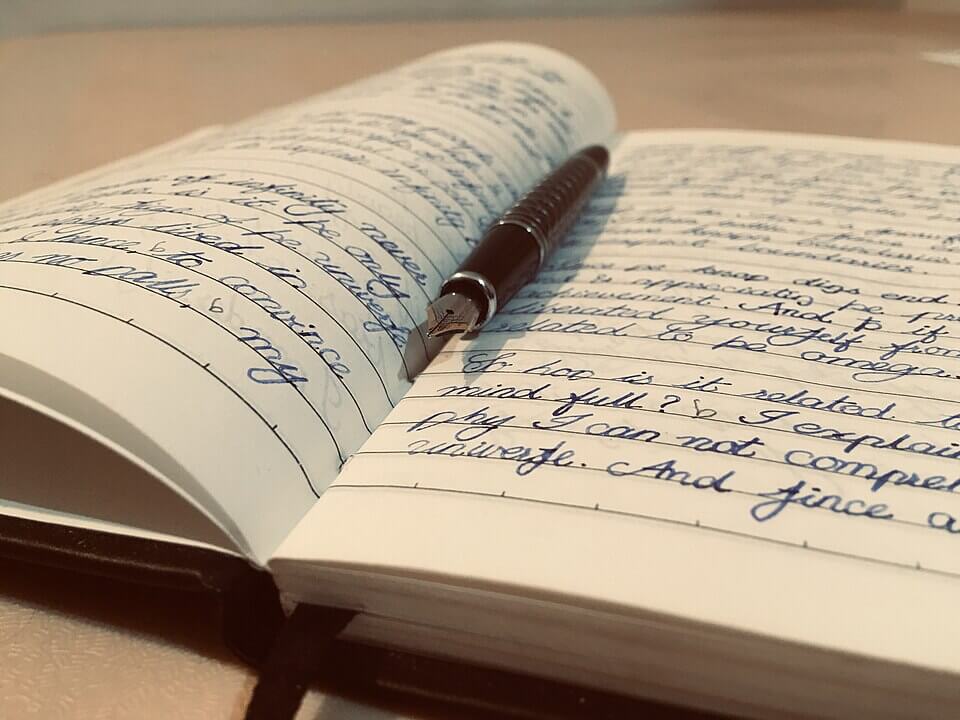
In 2000, Beck published Left for Dead: My Journey Home from Everest. It wasn’t just about the climb. It was about everything before and after.
He opened up about his depression, his near-fatal ambition, and the long journey to emotional and spiritual recovery.
It wasn’t a tale of survival. It was a confession, a lesson, and a love letter to the life he almost lost.
The Book’s Impact
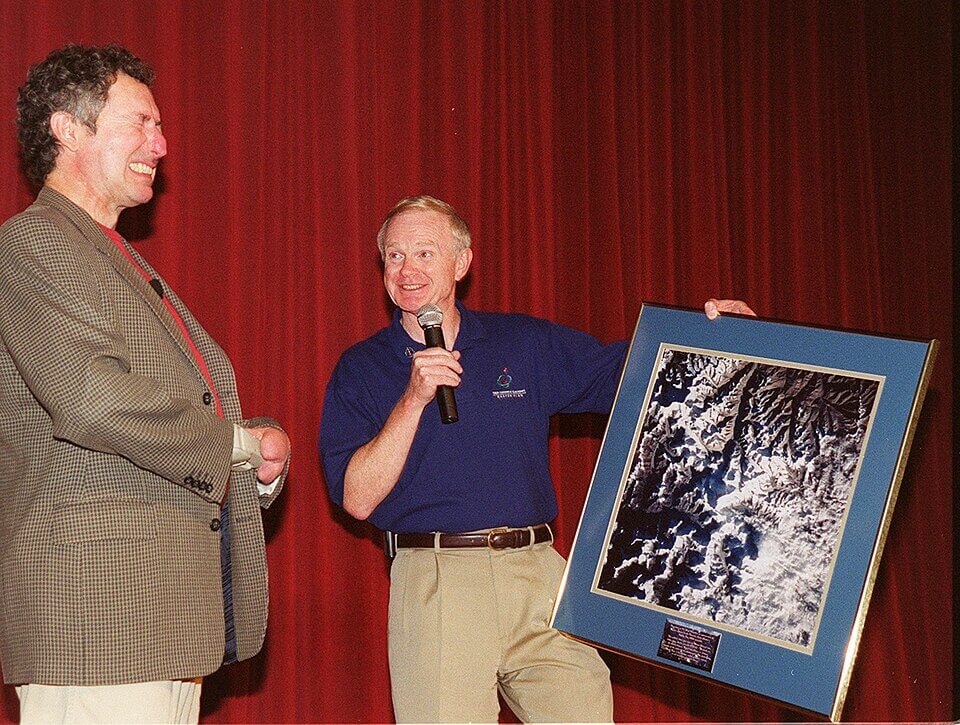
Left for Dead became more than a memoir—it became a manual for rediscovery. Readers saw a man stripped to nothing, clawing his way back.
It resonated far beyond climbing circles. Anyone who had ever hit bottom found something in Beck’s story.
He wasn’t a hero. He was human. And that made him unforgettable.
Public Speaker, Private Man

After Everest, Beck began speaking publicly. His talks weren’t about triumph—they were about failure, pain, and learning to rebuild from absolute zero.
Audiences didn’t just hear about avalanches and altitude. They heard about divorce, doubt, and redemption.
Beck’s story became a mirror. He wasn’t inspiring people to climb mountains—but to face their own.
Worth the Cost?
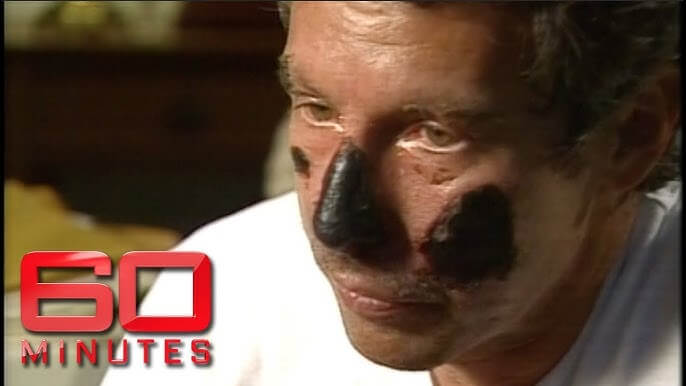
Would he do it all again? That question haunted him. Beck’s answer: Yes. Even knowing what he’d lose, he’d trade it again for his family.
His hands were gone. His nose was rebuilt. But what he gained? A second chance. Clarity. Peace. Purpose.
The mountain stripped him down—but didn’t finish him. It gave him back to the world, slightly broken but finally whole.
The Backyard Truth
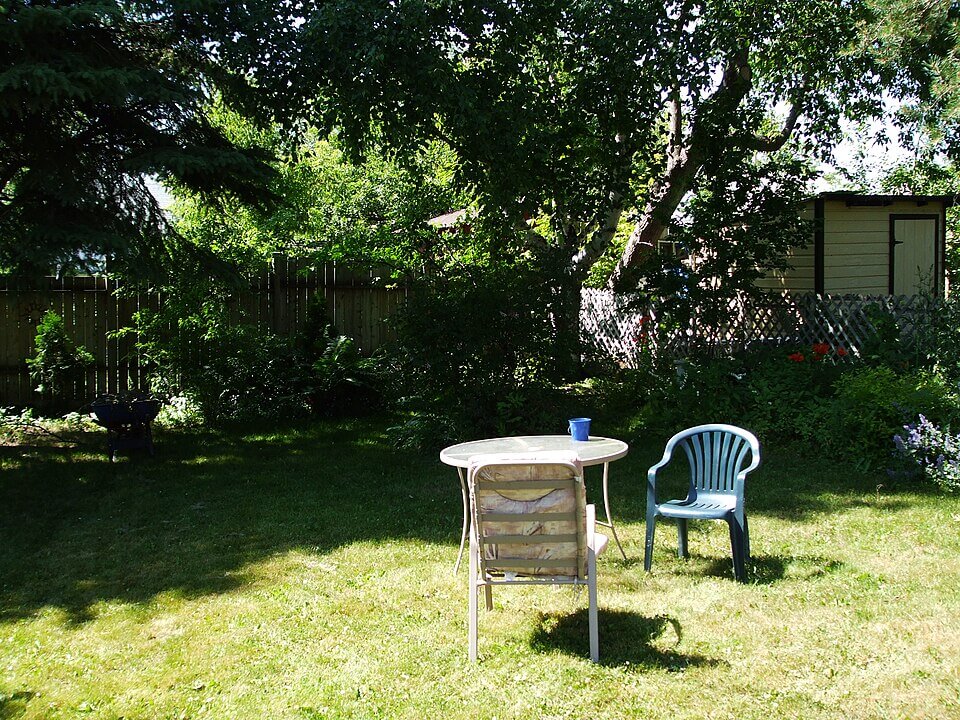
Beck had spent years searching for meaning on mountaintops, trying to conquer peaks that never asked for him.
Turns out, what he needed wasn’t 29,000 feet high. It was at home all along. Who would’ve thought, right?
His redemption didn’t come with ice axes. It came with forgiveness, humility, and love rediscovered.
A New Kind of Climber

Beck still climbs—but different mountains now. Rebuilding trust. Being present. Letting go of the need to prove anything to anyone.
His greatest summit wasn’t Everest. It was the slow, humbling work of becoming a better husband, father, and man.
Every scar tells a story—but the real story is who he became after the storm.
After the Fall
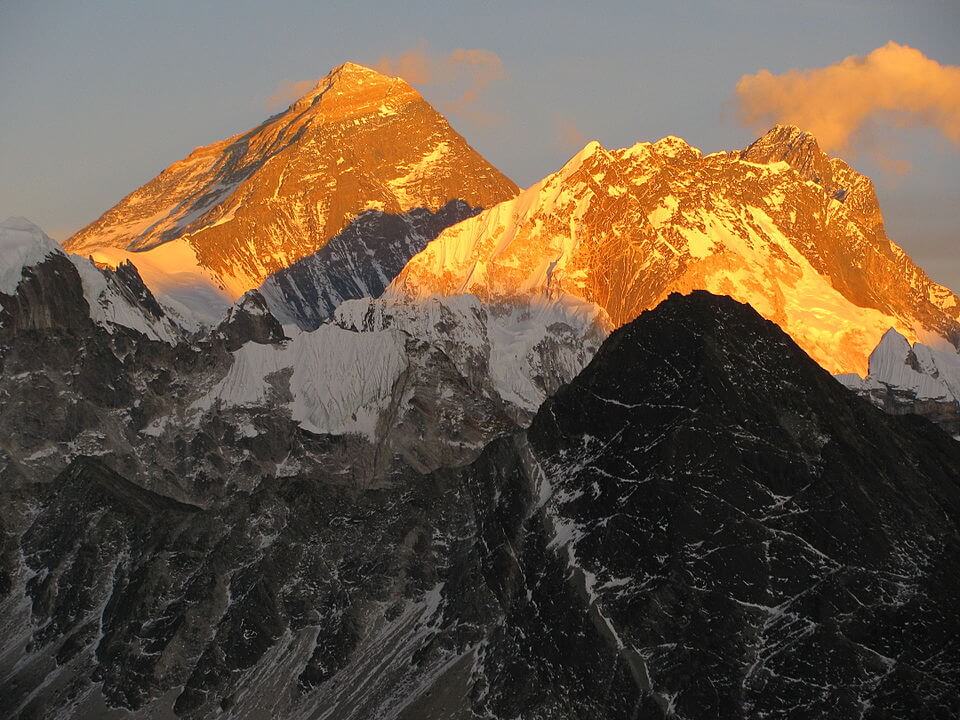
Beck returned from Everest battered, disfigured, and facing a brutal recovery. Dozens of surgeries awaited him, but the emotional healing proved even harder.
He had to relearn how to be a father, a husband, a man no longer defined by altitude or accolades.
The trauma didn’t fade. But neither did the gratitude. Beck had a second shot at life—and wasn’t going to waste it.
Final Word: Why This Story Matters
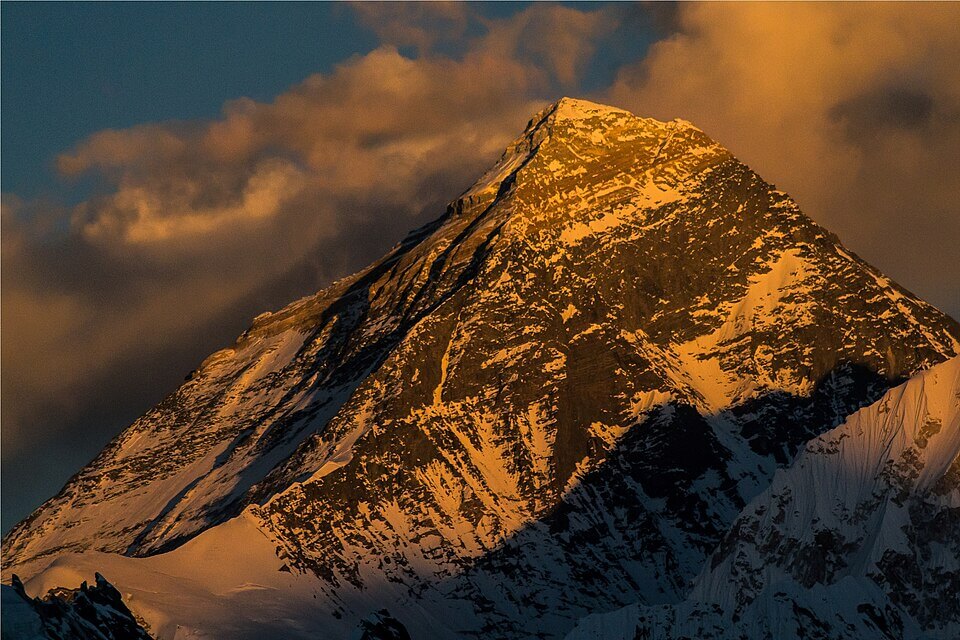
Beck Weathers’ story is about more than ice, storms, and frostbite. It’s about obsession, loss, rebirth—and the price of chasing the wrong summit.
He went looking for worth on the roof of the world. He found it on the ground, beside his family, inside himself.
It’s not a survival story. It’s a transformation. And it’s one we all need to hear.

